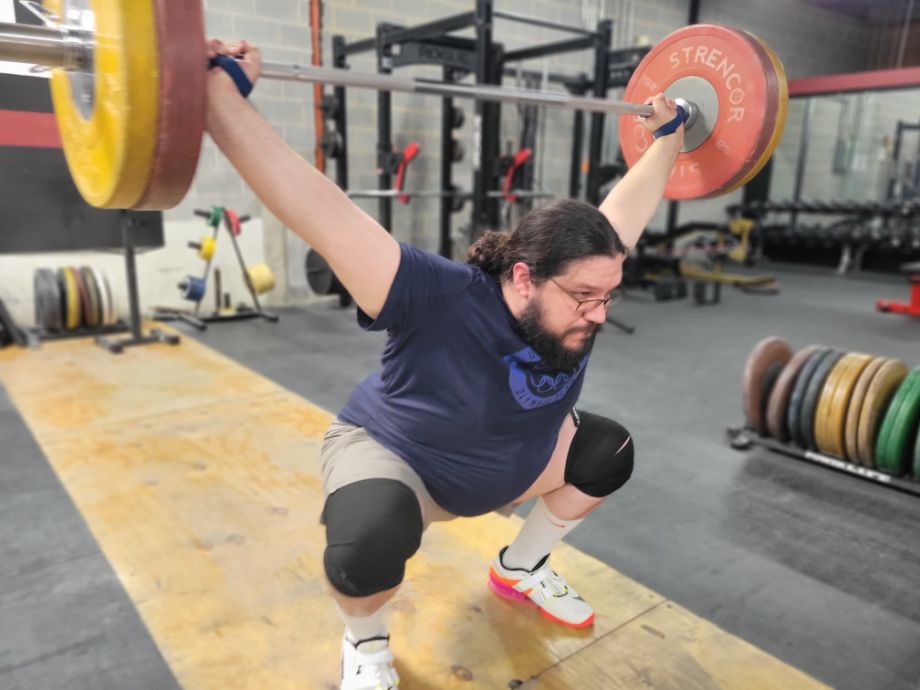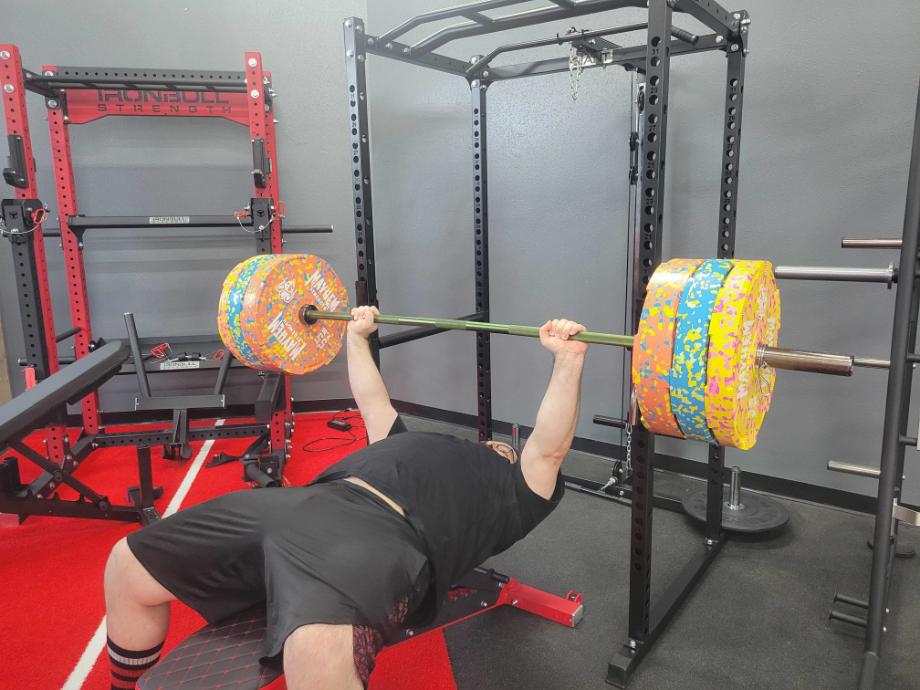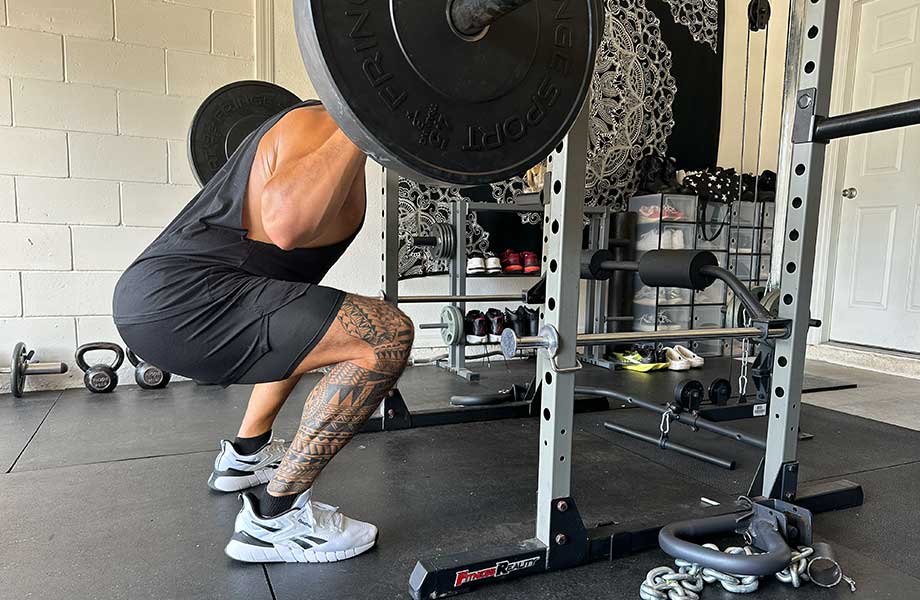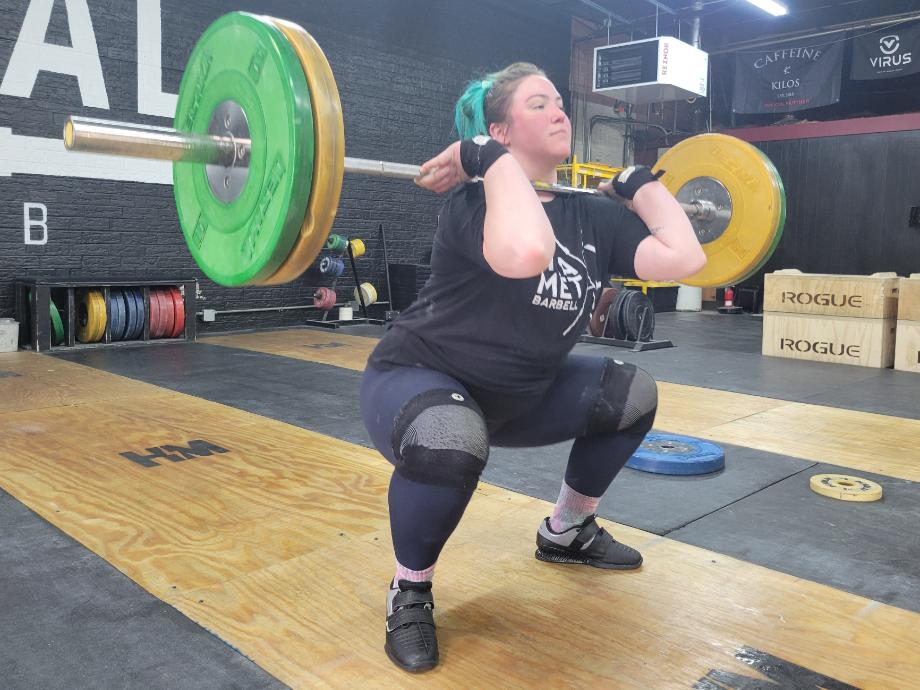Assuming you’re a barbell regular and no stranger to strength training sessions, you may occasionally seek training adaptations, configurations, and different methods for boosting your power and strength to make those hard-won muscle mass gains. Or perhaps you’re looking for a way to improve your efficiency in a shorter amount of time? We’ve discussed ways of shaking up your standard workout in our guides to superset workouts and drop set workouts, but today, it’s time to take a look at another productive training method: cluster sets.
Cluster sets use short intraset rest breaks to help reduce the potential training fatigue of traditional sets while lifting heavier loads. You’ll see the most benefit during high-intensity sets with more complex exercises, like Olympic lifts and power movements—like power cleans—or other compound exercises.
Read below to learn all about cluster sets and how I utilize them as a collegiate strength and conditioning coach (CSCS).
What Are Cluster Sets?
A cluster set is simply a set with individual repetitions or small groups of reps—usually 1 to 5—broken up by short rest periods to help build velocity. It’s an attempt to manage the fatigue generated by straight sets so that it feels easier and an athlete can work at a higher level for the same fatigue cost.
How Does Cluster Set Training Work?
To perform cluster sets, you’ll simply insert brief rest periods at strategic points during your lifting session.
For example, instead of performing six consecutive reps, you would perform three reps followed by 15 seconds of rest, then three more reps for a total of six. Alternatively, you could do five single reps with a 10-second break between individual reps and a longer rest before your next set.
Generally, the higher the reps in the “original” set, the more reps you’ll perform before taking your first intraset rest break. For example, if you wanted to use the cluster concept for a set of 12, you would probably break it up into three or four clusters of four or three reps—4×3 or 3×4—respectively.

If you wanted to use the cluster concept with a set of five, you could conceivably take a mini-break between each individual rep if the intensity is sufficiently high.
Also, keep in mind that you can manipulate the number of intraset rest intervals. By reducing the number of reps within the clusters, you can reduce the RPE of the work performed. For example, doing 12 reps as three clusters of four reps—3×4—would make the RPE higher than doing six clusters of two reps—6×2.
There are a few other factors to consider when choosing an intraset rest interval or the number of reps within a cluster:
- Generally the rest interval will scale with the number of reps in the cluster. For Clusters in the 3 to 4 rep range (as in the example above), you’ll want intraset rest intervals in the 20 to 30 second range. For Clusters done with single reps, you can go as short as 10 seconds.
- Intensity plays a role as well. If the reps are very difficult or are at a high percentage of your one-rep max (higher than 80%), consider working at the higher end of any suggested intraset rest interval.
- More complex movements (for example, the snatch or clean) will benefit from longer rest intervals between reps.
What Exercises Work Best with Cluster Sets?
There are two questions I ask when determining if an exercise is a good candidate for cluster sets:
Am I concerned that fatigue will negatively affect the quality of the set?
If training for strength or power, then the quality of your reps is very important—particularly in Olympic weightlifting movements like the snatch and clean and jerk. If you’re training for muscle endurance or muscle growth, you can tolerate a greater decline in rep quality, so cluster sets may not be as beneficial.

A 2019 meta-analysis1 published in Sports Medicine concludes that “[Cluster sets] should be used when kinetic variables are emphasized, such as those targeting the optimization of velocity and power outcomes regardless of training experience.”
Is it a compound movement?
Compound movements like cleans, squats, or deadlifts are occasionally limited by a single (usually smaller) muscle group. This muscle group is not usually the main target of the movement (think the lower back in a set of squats), so we don’t want that to be the limiting factor.
RELATED: Full-Body Compound Workouts
By interspersing brief rest periods, you decrease the likelihood that the target muscle will be limited by a smaller supporting muscle, thus allowing us to do more work at a higher intensity. In a movement like a biceps curl, the limiter will usually be your biceps themselves, which is fine since that’s the muscle you’re trying to train.

Some examples of exercises that really benefit from the cluster methodology are:
- The Olympic lifts are great candidates for cluster sets. The high technical difficulty, the necessity of speed and power maintenance, and the total-body nature of the movements mean you may be able to really improve your Olympic lifts using clusters.
- The “Big 3” of Powerlifting—back squat, bench press, and deadlift—can all benefit greatly from including cluster sets as these exercises are full-body movements with intensity requirements for strength gains.
RELATED: Best Powerlifting Workout to Build Strength
Examples of Workouts Using Cluster Sets
Cluster sets are a great way to reduce the fatigue caused by any given set and rep combination, but that doesn’t mean you should use them in all cases. Here are two ways I like to use cluster sets with my collegiate athletes:
The “In-Season” Method
- Optimal for: This cluster set utilization works well during hypertrophy-oriented training programs.
- Loading: Use the same total sets x reps x load as you would in a normal session.
- Rest: The intraset rest periods will lower the RPE (rate of perceived exertion) of the set.
- Examples:
- Under standard training conditions, a set of 6 at 75% would be approximately a 7-8 out of 10 RPE.
- Insert a 20-second intraset rest period after reps 1-3 and before reps 4-6 to decrease the RPE to approximately a 6-7 out of 10.

The “Off-Season” Method
- Optimal for: This type of cluster set utilization works really well near the end of a strength or power oriented training block.
- Loading: Use a set x reps x load scheme that would be MORE challenging than what you would normally use. This type of training is still very challenging and should be planned out well in advance!
- Rest: The intraset rest periods will lower the RPE of the set to a manageable level.
- Examples:
- Under standard training conditions, a set of 4 at 90% would either be at or above a 10 RPE.
- Insert a 30-second rest period after reps 1-2 and before reps 3-4 to lower the RPE to approximately 8.5-9.5.
RELATED: What Is RPE?
What Are the Benefits of Cluster Sets?
Now that you understand the how of training using cluster sets, I’ll explain the why by sharing the benefits.
May Help Decrease Fatigue
While all versions of resistance training will generate at least some fatigue, using cluster sets may allow you to generate less fatigue than a comparable set done in the normal fashion, which can help you reach your training goals if you’re in a period of high training volume or intensity.
May Improve Rep Speed and Quality
One of the biggest benefits of cluster-style training is the improved ability to maintain high rep quality later into a set. In the back half of a set of six repetitions, reps four, five, and six will usually be slower than reps one to three. By using the cluster method and potentially taking a 20-second break between reps one to three and four to six, you’ll be able to maintain higher bar speeds and rep quality. This is especially important when training for strength and power.

For example, a 2013 study2 in the Journal of Strength and Conditioning Research found that training with intraset rest intervals “resulted in greater gains in power output and strength when compared with traditional training methods over 12 weeks.
Are There Any Disadvantages of Cluster Sets?
While there are many cluster set advantages, there’s one potentially big drawback.
While cluster sets can be very useful in managing fatigue or allowing the athlete to do more work for the same fatigue cost, the additional rest time between sets can mean clusters aren’t a viable option for everyone. If you’re pressed for time like many of us are, you might need to focus more on supersets (alternating sets of different exercises with minimal rest) than cluster sets.
If you’re short on time and still want to give cluster sets a try, I would suggest you pick the most important movement in your workout (for example, squats in a lower-body session) and utilize cluster sets for that movement only.
Who Should Use Cluster Sets?
As with most advanced training concepts, I wouldn’t recommend cluster sets for people new to resistance training. For those folks, just focus on increasing your sets/reps/load consistently.
I also probably wouldn’t recommend cluster sets for someone exclusively focused on muscle growth. Because, as shown in a 2012 Journal of Applied Physiology study3, muscle hypertrophy has been shown to occur at intensities as low as 30% of 1RM (one-rep max), there probably isn’t any real need to use cluster sets in hypertrophy training. This is especially true when considering that you can use the extra time involved in cluster sets to do more work on your target muscles.

The people I WOULD recommend cluster sets for are those people who are intermediate or above and focused on muscle strength and power. The fatigue management aspects of cluster training are most valuable for those people for whom the quality of the rep matters, as it would for a powerlifter or weightlifter.
Cluster Sets: Final Thoughts
Cluster sets can be a great way to manage fatigue. You can use them to lower the fatigue cost of a given set or to perform a higher-intensity set for the same fatigue cost.
- Cluster sets are best used with compound movements where strength and power are the main focus.
- Incorporate more rest (longer and/or more frequent intraset rest periods) for higher rep sets, higher intensity sets, or more technical movements like the Olympic lifts.
As a collegiate strength and conditioning coach, clusters are one of the first tools I reach for when I need to manage the fatigue my athletes are generating while still working at a high level.
I generally reserve clusters and other advanced training methodologies for more experienced lifters, and even then, I only suggest them when doing more technically demanding or total-body movements.
Cluster Sets: FAQs
Do cluster sets build muscle?
As a strength and conditioning coach, I’ve seen that cluster sets themselves don’t build muscle. However, because they potentially allow someone to do MORE work with the same level of fatigue, they may be useful in a hypertrophy-oriented training plan.
What is the difference between cluster sets and supersets?
A cluster set is a single set of the same exercise but with extra rest interspersed between single reps or groups of reps. You’re either moving or resting. During a superset, you’re alternating between sets of two exercises. For example, you would do a set of Exercise A, then Exercise B, then back to Exercise A.
What is a cluster set example?
A great example of a cluster set using the squat as an example would be unracking the bar, performing three squats, re-racking the bar for 15 to 30 seconds, then unracking the bar and performing three more squats. You could do this using the same weight you would use for a normal set of six to lower the amount of fatigue generated or using more weight than you would for a normal set of six to do more work for the same amount of fatigue.
References
- Latella, C., Teo, W., Drinkwater, E. J., Kendall, K., & Haff, G. G. (2019). The Acute Neuromuscular Responses to Cluster Set Resistance Training: A Systematic Review and Meta-Analysis. Sports Medicine, 49(12), 1861–1877. https://doi.org/10.1007/s40279-019-01172-z
- Oliver, J. M., Jagim, A. R., Sanchez, A. C., Mardock, M. A., Kelly, K. A., Meredith, H. J., Smith, G. L., Greenwood, M., Parker, J. L., Riechman, S. E., Fluckey, J. D., Crouse, S. F., & Kreider, R. B. (2013). Greater Gains in Strength and Power With Intraset Rest Intervals in Hypertrophic Training. The Journal of Strength and Conditioning Research, 27(11), 3116–3131. https://doi.org/10.1519/jsc.0b013e3182891672
- Mitchell, C. J., Churchward-Venne, T. A., West, D. W. D., Burd, N. A., Breen, L., Baker, S. K., & Phillips, S. M. (2012). Resistance exercise load does not determine training-mediated hypertrophic gains in young men. Journal of Applied Physiology, 113(1), 71–77. https://doi.org/10.1152/japplphysiol.00307.2012







